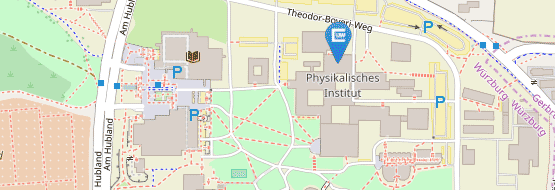Spectral weight transfer and quasi particle interference in a hole-doped Mott insulator on a triangular surface lattice
01.12.2016Prof. Hanno H. Weitering, University of Tennessee, Knoxville, USA SFB-Colloquium in SE2 at 16:15
The physics of doped Mott insulators is at the heart of some of the most exotic phenomena in materials research. Insulator-metal transitions, colossal magneto-resistance, and high-temperature superconductivity in e.g. complex oxide compounds, all emerge as a function of carrier doping. These phenomena are rooted in the strongly correlated motion of the charge carriers and their coupling to lattice and magnetic excitations of the crystal. Advances in this field would greatly benefit from the availability of new material systems with similar richness of physical phenomena, ideally those that are less complex in structure and composition, and easier to model theoretically. Here we show that such a system can be realized on a silicon surface. Adsorption of one-third monolayer of Sn atoms on a Si(111) surface produces a triangular surface lattice with half-filled dangling bonds. Modulation hole-doping of these dangling bonds unveils clear hallmarks of Mott physics, and additionally produces a strong singularity in the density of states just below the Fermi level. At a critical doping level, we observe a strong zero-bias anomaly in the local density of states, signaling the formation of a magnetic or superconducting gap. These observations are remarkably similar to those made in complex oxide materials, including the high-temperature superconductors, but highly extraordinary within the realm of conventional sp-bonded semiconductor materials.


